Anterior pelvic tilt
Table of Contents
What is Anterior pelvic tilt?
- An anterior pelvic tilt is when your pelvis is rotated forward, which efforts your spine to curve. It is often caused by excessive sitting without enough exercise and stretching to counteract the results of sitting all day.
- If you have an anterior pelvic tilt you may notice that the muscles in the front of your pelvis and thigh muscles are tight, while the ones in the back muscle are weak. Your gluteus muscles and abdominal muscles may also be weak.
- Your pelvis helps you walk, run, and lift the load off the floor. It also contributes to proper posture.
Causes of Anterior pelvic tilt:
- The anterior pelvic tilt is caused by the shortening of the hip flexors muscles, and the lengthening of the hip extensors muscles. This result in increased lower spine curvature, and upper back curvature.
- The hip flexors are the muscles that attach the thigh bone toward the pelvis and lower back. They are used to run, kick, jump or bend at the hip.
- The hip extensors muscles consist of 4 muscles, three of which are known collectively as the hamstring muscles, and the gluteus maximus. They help to extend the hip.
- Weak stomach muscles also play a task in an anterior pelvic tilt.
- The changing shape of the spine curve, and the associated muscle imbalances, are often caused by prolonged times of sitting. A lack of stretching or strengthening exercises also contributes to anterior pelvic tilt.
Risk factors:
- prolonged periods of sitting
- lack of physical activity
- poor posture
- genetics
Symptoms of Anterior pelvic tilt:
- Tight muscles in the pelvic area and thigh areas.
- Weak gluteus maximus and stomach muscles.
- Bad posture with the lower spine curving in, and a protruding stomach.
- The pain in the lower back area, hips, or knees.
How to Diagnose the anterior pelvic tilt?
- your doctor will perform physical tests and observe.
Thomas test
- Lie down on a table. The legs should be hanging off the table, at the knee area.
- Pull one leg to the chest, bending and holding at the knee. Then, repeat with the other leg.
- If the pelvis is incorrectly aligned, the back of the resting leg will lift off the table.
- If it is necessary to extend or rotate the resting leg in any way, in order to keep it from lifting off the table, it indicates a pelvic tilt.
- Negative Test:
- The back of your thigh touches the table without a gap between your thigh and the table.
- No Gap.
- Positive Test:
- If you have a gap between your thigh muscle and table even after straightening your leg you may have posterior pelvic tilt.
- Gap.
Scanning:
- Test: x-ray
- The pelvic tilt is one of the parameters contributing to the separate pelvic orientation. It is measured on an anteroposterior pelvic radiograph as the distance between the mid portion of the sacrococcygeal joint and the upper border of the symphysis pubis.
Treatment of Anterior pelvic tilt:
- Initially symptomatic medical treatment with a combination of Physiotherapy treatment & exercise corrects the posture, severe surgery is the last prescribed option.
Medical Treatment:
- An-inflammatory pain relieving medicines mainly NSAIDs can relieve pain.
- Over-the-counter pain relievers: Acetaminophen (Tylenol), ibuprofen, (Advil, Motrin IB), naproxen (Aleve)
Physiotherapy Treatment of anterior pelvic tilt:
- Stretching and Strengthening to Correct anterior pelvic tilt.
- The best way to correct an anterior pelvic tilt is to balance the muscles affecting the unnatural positioning of the pelvic. Muscles that are chronically tight need to recover their flexibility through stretching. While the muscles that are weak need to be strengthened.
Stretches/Releases to Correct Anterior pelvic tilt :
Kneeling rear leg raise:

- This exercise stretches the back and buttock (glutes) muscles while strengthening the abdominal (stomach) muscles.
- Begin on all fours on an exercise mat. The hands should be directly under the shoulders, and the knees directly under the hip areas. load should be evenly distributed between the hands and knees.
- Tighten the abdominal muscles.
- Reach the proper leg back in line with the body, keeping the toes pointed and the leg straight. Do not arch the back.
- Hold the leg in position for five seconds. Lower and repeat ten times.
- Switch sides and repeat the above process with the other leg.
Knee-to-chest stretch:
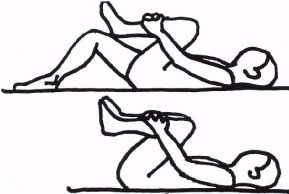
- Lie on your back with your legs fully extended.
- Bend your right leg and pull your knee to your chest.
- Hold for 12-15 seconds, then release. Repeat with the left leg.
Kneeling hip flexor stretch (psoas and iliacus)
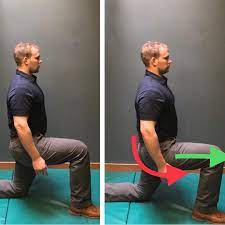
- Prolonged sitting can cause hip flexor muscles to tighten, but stretching will help loosen them again.
- This stretch helps to loosen the muscles and lengthen tight hip flexor muscles.
- Kneel down on the left knee, ensuring the proper knee is directly over the right ankle.
- Place both hands on the right thigh muscles for stability. Make sure the spine is tall and straight.
- Tighten the buttock and abdominal muscles, and keep the pelvis in a neutral position.
- Lean into the proper hip, ensuring the pelvis and back remain stable. There should be a stretch in the hip flexor muscle and inner thigh muscles.
- Hold this position for 30 seconds. Repeat 5 times, aiming to stretch a little more with each repetition.
- Switch sides and repeat the above process to stretch the opposite hip flexor muscles.
Quadriceps muscles stretch
- Whilst standing, pull your ankle behind you to flex your knee.
- Stay upright and keep your knees in line with each other.
- Perform a posterior pelvic tilt and drive your hips normally forward side.
- Aim to feel a stretch at the front of your quadriceps muscles.
- Hold for 30 seconds.
- Repeat 2-3 times.
Groin stretch:
Groin Butterfly Stretch

- Sit on the floor with your back against a wall.
- Assume the position as shown above.
- Sit up at tall as possible.
- Try to create an arch in your lower back area.
- Gradually push your knees down to the floor.
- Aim to feel a stretch in the groin area.
- Hold for 30 seconds.
- Repeat 2-3 times.
Lower back stretch:
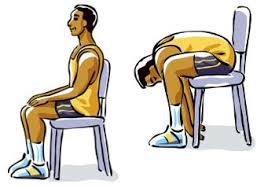
- Sit down on a chair.
- Lean all the way forward.
- Aim to feel a stretch in the lower back area.
- Hold for 30 seconds.
- Repeat two-three times.
Strengthening exercises for Anterior pelvic tilt
plank

- Doing a plank may be difficult at first, but the patient should hold the pose for as long as possible, eventually up to 1 minute.
- The plank exercise helps to target the abdominal muscles and back.
- Lie face down on an exercise mat.
- Place the hands on the mat, palms down. Keep the hands directly under the shoulder area.
- Tighten the abdominal muscles and the thigh muscles.
- Slowly lift the upper body and thighs off the floor, moving into a push-up position. Keep the body rigid and straight. Ensure the stomach(abdominal)muscles are engaged throughout the exercise.
- Hold the plank pose for as long as possible, working up to sixty seconds. Gently lower the body to the ground.
Pelvic tilt

- This exercise helps to strengthen the abdominal(stomach) muscles.
- Lie on the ground, face upward, with knees flexed.
- Squeeze the abdominal muscles, so that the back is flat against the ground. Bend the pelvis slightly upward.
- Hold this position for up to 10 seconds.
- Repeat for 5 sets of 10 repetitions
Squats:
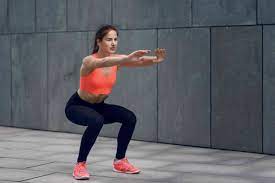
- squats strengthen the buttock muscles, hamstrings muscles, and other leg muscles.
- Stand with the feet slightly wider than hip-width. Turn the toes slightly outward.
- Squeeze the abdominal muscles, and keep the back in a neutral position.
- Breathe in. Lower the hips back and down, causing the knees to flex, until the thighs are parallel to the floor. The knees should not extend beyond the toes, and the heels should be firmly on the ground.
- Breathe out and slowly back to the starting position.
- Repeat 10 to 20 times.
The glute bridge:
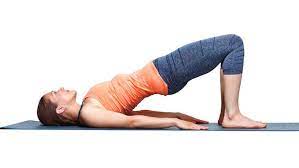
- This exercise targets the buttock muscles and the hamstrings muscles.
- Lie on the floor, face upward, and knees flexed.
- Place the feet hip-width apart.
- Squeeze the stomach muscles so that the back is flat against the ground. Keep the abdominal (stomach) muscles engaged throughout the exercise.
- Breathe out and lift the hips off the ground, so the upper body and thighs form a straight line.
- Breathe in and gently lower the body to the ground.
- Repeat 10 to 20 times.
Surgical treatment:
- Surgery for anterior pelvic tilt would usually be recommended if causing persistent pain that can’t be controlled with medication. the pelvic tilt is disrupting your body’s other important functions, such as breathing and the nervous system.
Complications:
- Anterior pelvic tilt increases pressure from trusted Sources on the lower back bones. This pressure can cause muscle fatigue and other issues, such as:
- tension in the neck muscles
- lower back pain
- inward rotation of the hip and knee
- hip and knee pain
- pressure on hip flexors causing sciatica
Prevention tips
- Avoid sitting for prolonged periods of time. Those who have desk jobs, and other roles that require sitting for prolonged periods, should take regular breaks that involve walking around or stretching.
- Engage in regular physical activity. This should include both muscle stretching and strengthening exercises.
- Ensure proper posture, especially when sitting. A comfortable and healthful workspace with the right positioned desk, screen, and seating is important.

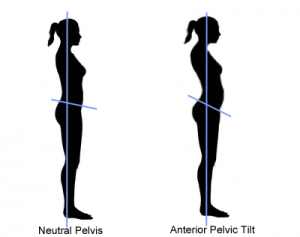


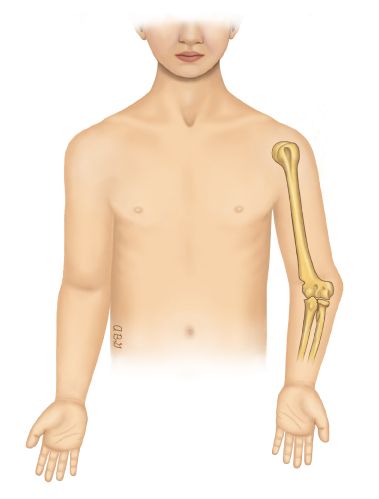

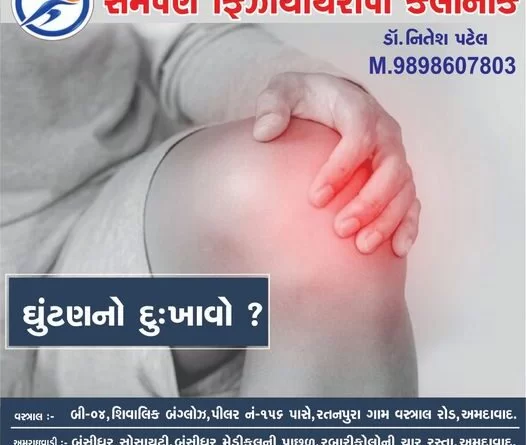
2 Comments